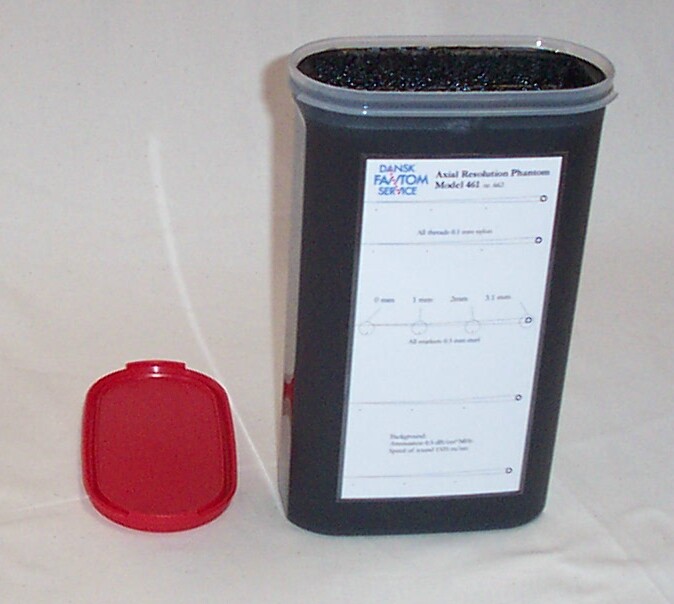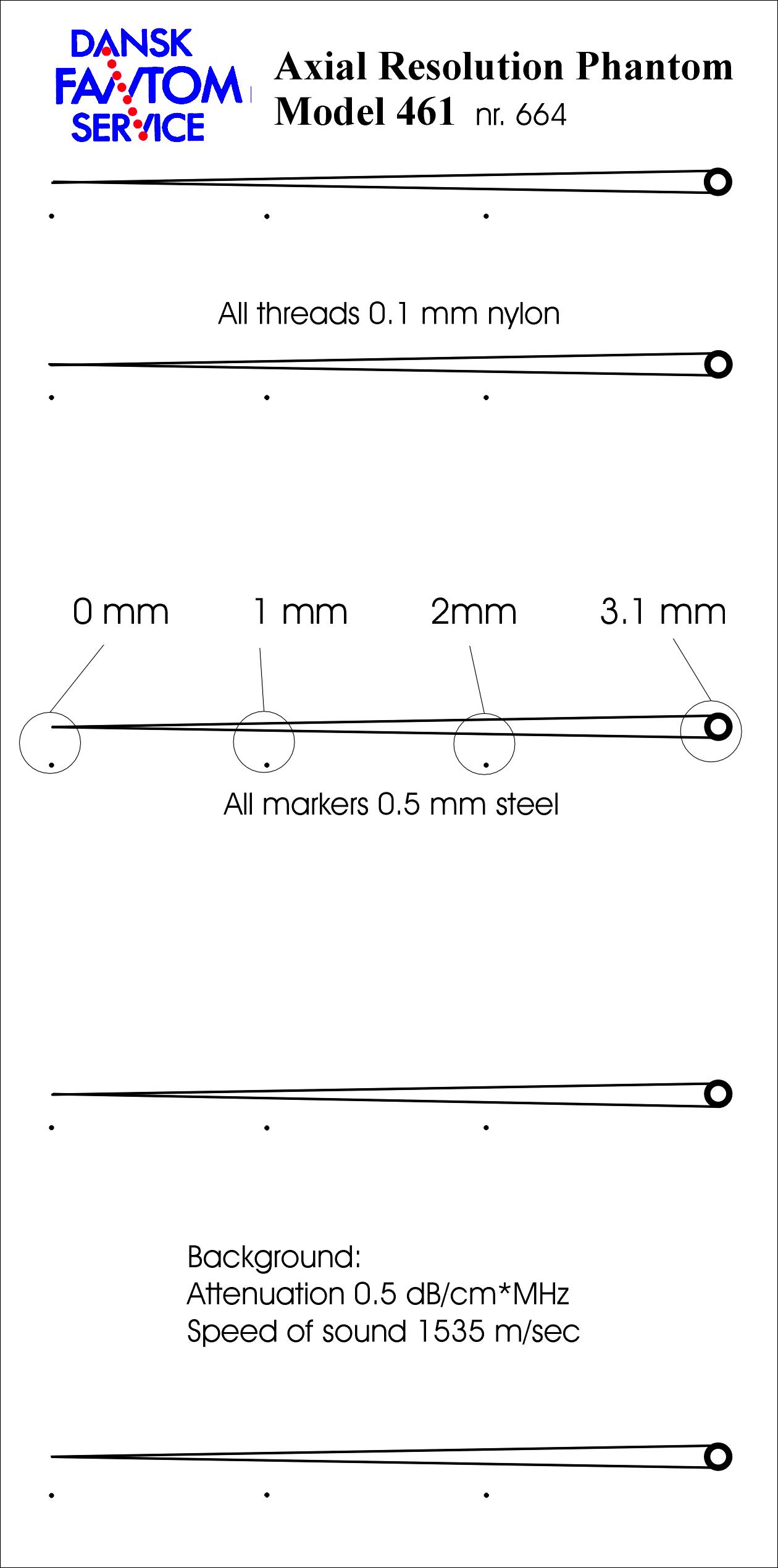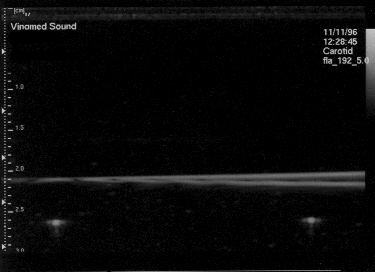
Model 461 and 1461, Axial resolution



|
|
|
Model 461 and 1461, Axial resolution
|
|
|
||
|
|
||
|
|
||
|
|
||
|
|
||
|
|
||
|
|
||
|
|
||
|
|
||
|
|
||
|
|
||
|
|
||
|
|
Model 461and 1461 is based on IEC document 1390, drawing A.2, designed for testing Axial resolution.
Model 461 is with horizontal surface and model 1461 with oblique surface.
|
|
|
Thin threads placed at 25 mm, 50 mm, 100 mm, 150 mm (and 200 mm) from surface.
All threads 0.1 mm nylon.
All markers 0.5 mm steel.
Background:
Attenuation 0.5 dB/cm*MHz. For tolerences see label on individual phantom.
Speed of sound 1535 +/- 15 m/sec.
Outer dimensions 230 mm * 180 mm * 95 mm
Weight 2.7 kg
For Axial resolution use the nylon threads:
Select a pair of threads at relevant distance. Notice the axial resolution should not change with distance.
Optimize the focus in the relevant distance.
Measure the distance between the threads, where they just can be distinguished from one another.
Or calculate the distance proportionally by means of the metal markers.
For lateral resolution use the steel markers:
1) Optimise the focus of the scanner in the region of test.
2) Reduce the amplification, so that the threads just can be seen.
3) Increase the amplification 20 dB.
4) Measure the dimensions of one wire axial and lateral.
Repeat step 1 to 4 at relevant depths.